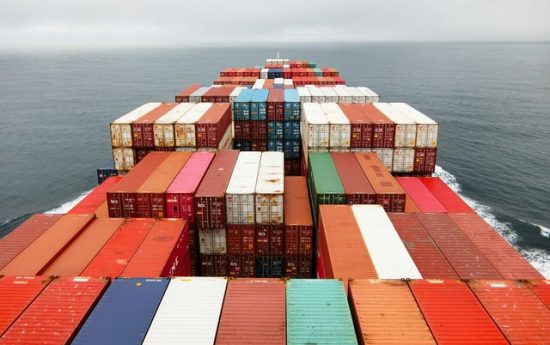-
Carriers posted a record EBIT result in the first quarter of 2021 of $27.1 billion, up from only $1.6 billion in same period one year ago and eclipsing the full-year 2020 EBIT of $25.4 billion
-
Volumes are expected to continue to rise through the third quarter peak season and to end 2021 with annual growth of about 10%.
-
Average freight rates across global trades are expected to rise by around 50% in 2021
-
If freight rates surpass expectations in the remainder of the year, an annual profit line in the region of $100 billion would not be a surprise
-
Supply side disruption has become the key driver of freight rates and lower port productivity is seen to continue into 2022
Drewry has sharply upgraded its carrier profit forecast to US$80 billion for 2021 from $35 billion earlier, as average freight rates are seen to jump by 50% this year amidst huge port and shipping operational disruptions.
The maritime shipping consultancy reflected the big change in its latest “Container Forecaster” report as box shipping rates reached new highs in the second quarter of 2021.
“At the moment it is hard to predict when prices will peak as worsening supply-chain disruption continues to stoke pricing on a weekly basis,” it continued.
The latest edition, published on June 30, said volumes are expected to continue to rise through the third quarter peak season and to end 2021 with annual growth of about 10%.
“There will still be growth next year, but probably only about half as strong as consumer spending is expected to move back towards services as Covid-related restrictions are lifted,” said Drewry.
In contrast, average freight rates (spot and contract) across global trades are expected to rise by around 50% in 2021, an uplift of as much as 30% on Drewry’s March forecast, indicative of the acceleration in pricing seen already through the first half of this year.
“The extreme increases in freight rates have naturally translated into blockbusting carrier profits,” said Drewry. Carriers posted a record earnings before interest and taxes (EBIT) result in the first quarter of 2021 of $27.1 billion, up from only $1.6 billion in same period one year ago and even eclipsing the full-year 2020 EBIT of $25.4 billion.
Given the substantially higher freight rate forecast for this year, Drewry has upgraded its full-year 2021 industry EBIT to about $80 billion—up from its previous estimate of $35 billion.
“If freight rates surpass expectations in the remainder of the year, we would not be surprised to see an annual profit line in the region of $100bn,” it added.
For 2022, EBIT is expected to drop by a bit more than one-third due to softening freight rates and rising costs that may stay higher for longer with many carriers locking into expensive longer-term charter fixtures.
“Nonetheless, it would represent another astonishing performance by historical standards,” Drewry said.
“Even if carriers do revert to type and the current newbuild craze ends the upcycle in 2023, they will have made so much money between 2020-22 that they will be set up for years to come. They could potentially make as much profit in this window as they could have hoped in a decade, or more,” it added.
Less optimistic about disruption
The report, meanwhile, is less optimistic about a solution being found to fix the supply chain disruption and thinks the market is facing medium-term (or extended) under-supply.
The Covid-19 outbreak at the South China port of Yantian in late May that hobbled operations for nearly a month and the earlier blockage in the Suez Canal demonstrate just how fragile the container shipping ecosystem, Drewry further observed.
Supply side disruption has become the key driver of freight rates and Drewry now thinks lower port productivity will continue into 2022.
Subsequently, Drewry expects the global supply-demand index to average 105.7 in 2021, up 0.9 points on its previous assessment. Any reading above 100 indicates tightness of supply in the market.
Drewry estimates that 16% of worldwide effective capacity (the slots available to the market) will have been lost this year as direct consequence of lower port productivity, following on from an 11% reduction last year.
Photo by Rinson Chory on Unsplash





